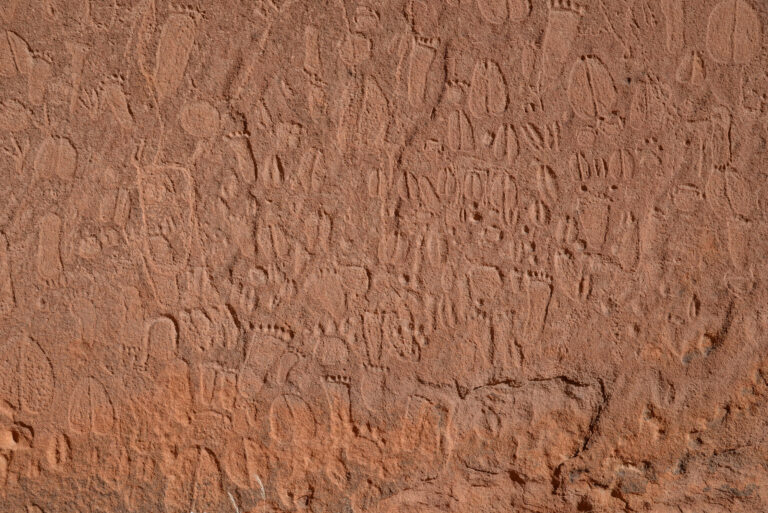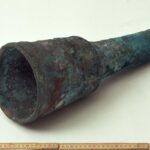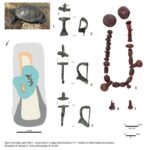Stone age artists carved detailed human and animal tracks in rock art from the Doro !Nawas Mountains in central Western Namibia
Indigenous trackers could identify the prints’ species, sex and age for 90% of analyzed engravings
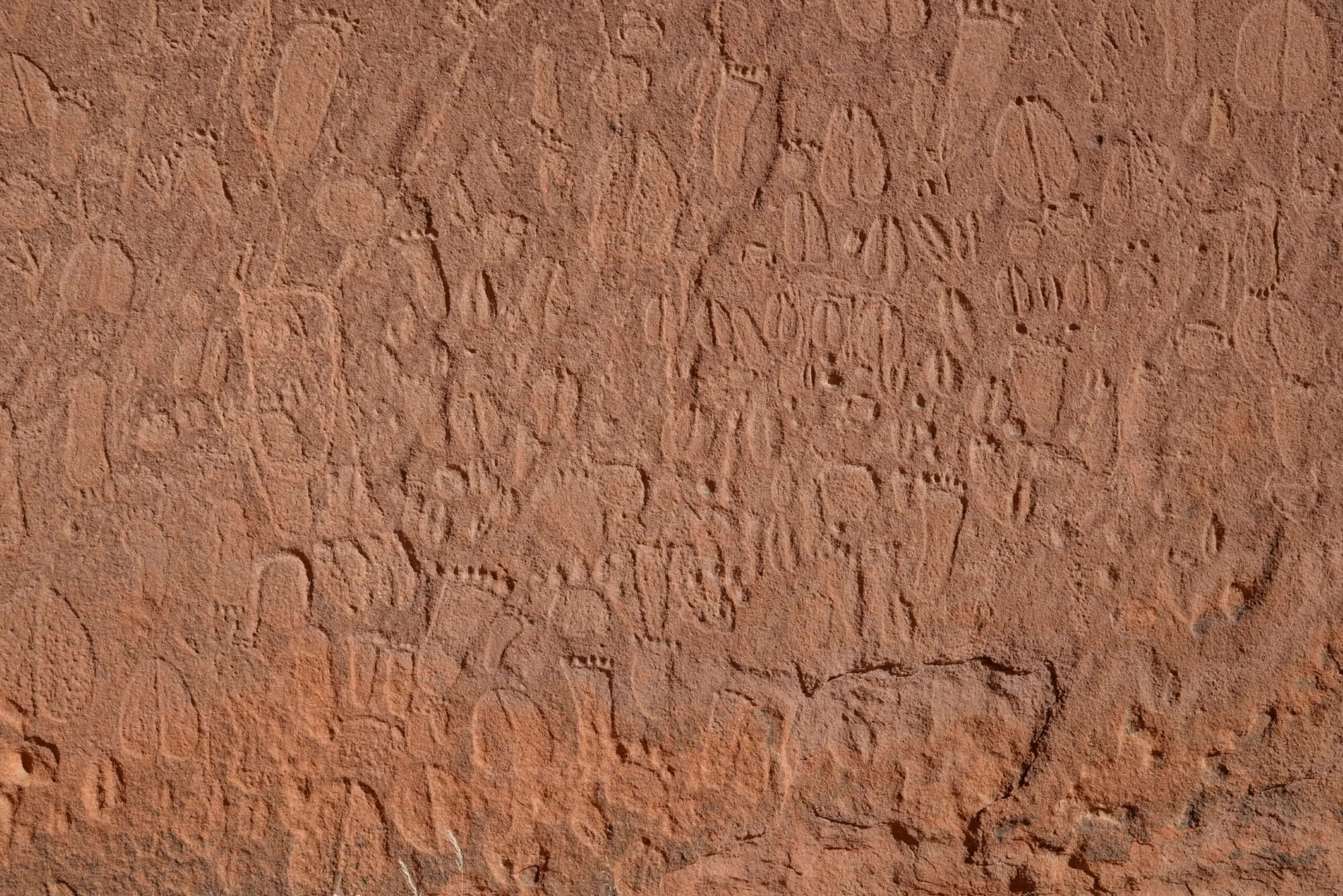
During the Later Stone Age in what is now Namibia, rock artists imbued so much detail into their engravings of human and animal prints that current-day Indigenous trackers could identify which animals’ prints they were depicting, as well as the animals’ general age and sex. Andreas Pastoors of Friedrich-Alexander-
Engravings of animal tracks and human footprints appear in numerous traditions of prehistoric rock art around the world. Namibia is especially rich in hunter-gatherer rock art from the Later Stone Age with many well-executed engravings of animal and human tracks. Most research into prehistoric rock art has grouped these engravings with geometric shapes, however, leaving them badly under-researched despite being common throughout the world.
In the new study, researchers enlisted the help of Indigenous tracking experts from the Kalahari desert to analyze animal and human footprints in rock art in the Doro !Nawas Mountains in central Western Namibia. The experts were able to define the species, sex, age group and even the exact leg of the animal or human print in more than 90% of the 513 engravings they analyzed. Their work showed the rock art had much more diversity in the animals represented by tracks than the engravings of the animals themselves. Engravers also showed a clear preference for certain species and were more likely to depict adult animals than juveniles, and male footprints compared to female footprints.
The new findings reveal patterns that likely arise from culturally determined preferences, but the meaning of these patterns is still unknown. The researchers propose that consulting with present-day Indigenous experts may shed some light in this area. They point out that while Indigenous knowledge has tremendous capacity to advance archaeological research, in this situation, the precise meaning and context of the rock art will likely remain elusive.
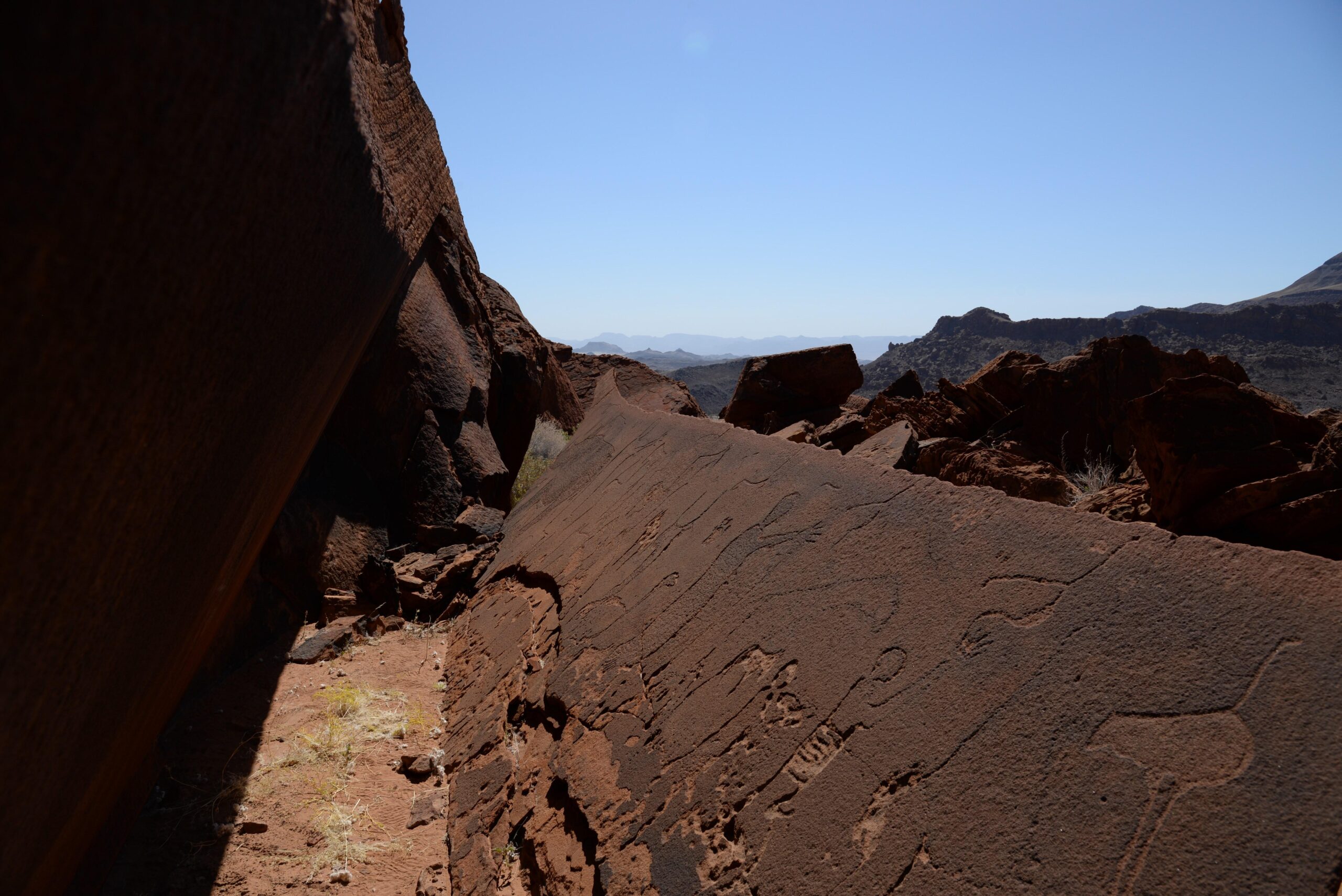
The authors add: “Namibia‘s rock faces contain numerous Stone Age depictions of animals and humans, as well as human footprints and animal tracks. Until now, the latter have received little attention because researchers lacked the knowledge to interpret them. Archaeologists from the Friedrich-Alexander University of Erlangen-Nürnberg and the University of Cologne in Germany, together with indigenous trackers from the Nyae Nyae Conservancy in Tsumkwe, Namibia, have now examined several hundred of the tracks in more detail and discovered surprising details: the tracks cover a wider range of animal species than in conventional animal depictions and differentiated cultural patterns emerge in the representation of the various species.”
Press release from PLoS ONE
How just one set of animal tracks can provide a wealth of information
Namibian tracking experts enable researchers from FAU and the University of Cologne to analyze images of animal tracks in rock art.
Rock faces in Namibia are decorated with hundreds of stone-age images not only of animals and human footprints, but also of animal tracks. These have been largely neglected to date as researchers lacked the knowledge required to interpret them. Archaeologists from Friedrich-Alexander-Universität Erlangen-Nürnberg (FAU) and the University of Cologne have now worked together with animal tracking experts from the Nyae Nyae Conservancy in Tsumkwe, Namibia, to investigate the engraved animal tracks on six rock faces in more detail, and were able to determine detailed information on the species, age, sex, limbs, side of the body, trackway and relative direction of the tracks.
In the Doro !nawas mountains in the Namib desert in northwest Central Namibia, vegetation is sparse, trees and bushes generally only grow along small dry river beds. Thanks to various permanent waterholes, however, there is an unusually high occurrence of different animals: springboks, giraffes, elephants, lions and leopards all cross the area. The area remains untouched by humans at the current time. It is not inhabited or exploited in any other way. It was a different story in the past, however. Numerous instances of rock art representing animals as well as human footprints and animal tracks show that stone age hunters and gatherers lived here in the past.
Until now, archaeologists have only been able to interpret the species of the animals depicted in the rock art. Animal tracks tended to be classified together with the abstract symbols.
“Researchers have until now completely neglected the fact that traces and tracks are also a valuable source of information,”
explains PD Dr. Andreas Pastoors from the Institute for Prehistory and Protohistory at FAU. Together with his FAU colleagues Prof. Dr. Thorsten Uthmeier and Dr. Tilman Lenssen-Erz from the African Research Institute at the University of Cologne, Pastoors has therefore taken a new approach, merging western archaeological science with indigenous knowledge in an innovative research project. The project began in 2013, when San tracking experts from Namibia read human footprints on the floor of caves in France decorated with rock art from the Ice Age. Now together with the Namibian tracking experts Tsamgao Ciqae, Ui Kxunta and Thui Thao from the Nyae Nyae Conservancy in Namibia, the three researchers set up camp for approximately one week in the Doro !nawas mountains, and investigated six rock faces depicting a particularly large number of human footprints and animal tracks.
The investigated rock faces are at the edge of an area resembling a crater with a diameter of approximately one kilometer in the Doro !nawas mountains.
“At the upper edge there are large boulders with flat surfaces which people in the Stone Age decorated with rock art,” explains Pastoors. The rock art shows various different motifs, ranging from human footprints to people and animals such as elephants, giraffes, rhinoceroses and ostriches. “These images are easily recognizable by western archaeologists,” says Pastoors. However, they also depict animal tracks that have until now only been classified together with the abstract symbols. “Seen from the perspective of western art history, researchers are unable to recognize anything in these images, as they are lacking the relevant expertise. For this reason, the tracks have not yet been assessed as a legible source of information, which has in turn led to misleading hierarchies being created with regard to the value of the various images.”
Stone age illustrations of animal tracks prove to be a valuable source of information
The study that has now been published counteracts this trend. Tsamgao Ciqae, Ui Kxunta und Thui Thao have discovered surprising details in the rock art. In more than 90 percent of the analyzed 513 images they were able to determine the species, age range, sex, specific limbs, side of the body and the direction of the animal tracks or human footprints. Interestingly, the animal tracks indicated a larger variety of species than those in the pictures of animals illustrated in profile in rock art in neighboring regions. The team of researchers was able to identify 20 further animal species in the animal tracks, ranging from bushpig, buffalo, monkey and caracal to various different types of antelopes (duiker, bushbuck, roan antelope, ibex), to bird species such as red-crested korhaan and marabou. One rather surprising aspect is that some of these species require damper conditions than those found in this part of Namibia, at least at the current time. But then why did the stone-age artists draw them? How did they know about them?
“We cannot answer these questions with the state of research as it stands at present,” admits Pastoors. However, it is plausible that the artists knew other regions with damper environmental conditions, as the Doro !nawas mountains were similarly dry as they are today.”
In addition, the analyses show patterns that are obviously the result of cultural preferences. This includes, for example, the relative direction of the individual animal tracks that the tracking experts were able to decipher from the images.
“We beamed a virtual clock onto the rock face and then noted the direction of the tracks according to the hours on the clock face.”
The result: Most tracks pointed upwards towards 12 o’clock, only a few pointed down towards 6 o’clock. The one exception were the zebra tracks. They were depicted traveling in all directions.
“It’s really exciting to see that the animal tracks can give us far more information that we originally thought,” summarizes Pastoors.
For him, the study is also a “further confirmation of the fact that indigenous knowledge with its extensive insights in a number of different subject areas has a valuable contribution to make towards driving archaeological research forward.”
Bibliographic information:
Lenssen-Erz T, Pastoors A, Uthmeier T, Ciqae T, Kxunta /, Thao T (2023) Animal tracks and human footprints in prehistoric hunter-gatherer rock art of the Doro! nawas mountains (Namibia), analysed by present-day indigenous tracking experts, PLoS ONE 18(9): e0289560. https://doi.org/10.1371/
Press release from the Friedrich-Alexander-

